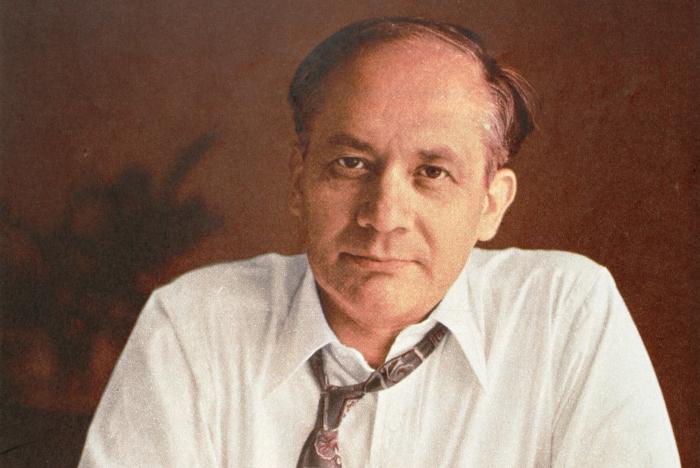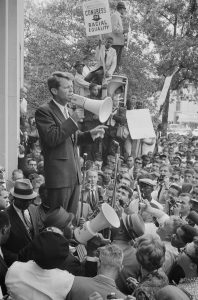
At a quiet New York cemetery in 1959, a handful of people stand around a fresh grave as a casket is lowered. Any passerby seeing the small somber ceremony might assume that the body belonged to a person of little significance. In fact, this casket carries the body of a man who is responsible for one of the largest shifts in international law in human history. Without his efforts, it is likely that the gravest crime mankind has ever committed and continues to commit would still be a crime without a name.
By the end of World War II, the Nazi regime had orchestrated the murder of over 17 million civilians in concentration camps throughout Europe. 1 Despite these egregious atrocities, no one at the time referred to the Holocaust as an act of genocide, not because it was not an appropriate descriptor, but because Raphael Lemkin had not yet coined the word and defined the crime for the world. The outcome of his personal crusade to encode ‘Genocide’ in an internationally recognized and binding Convention to which the US would sign on became his legacy (the US signed on decades after his passing).
Lemkin was born to a Polish-Jewish family in 1900 in a small village called Bezwodne in what was then The Russian Empire. Home schooled by his mother, he proved to be a brilliant scholar. By the time he received his undergraduate degree from Jan Kazimierz University he had learned over 14 languages and showed strong aptitude and interest in international law. After a career as a prosecutor in Poland, he was forced to flee to Sweden to evade capture by the Nazi forces in 1939. However 49 of his relatives were tortured and/or killed, drops in the ocean of inhumanity that was the Holocaust. 2

After fleeing the Nazi invasion, Lemkin eventually made his way to the United States. There he became a prolific professor, lecturing at the law school at Duke University in 1941 and the School of Military Government at the University of Virginia in 1942. He also served as an adviser to the United States War Department specializing in international law. 3
The world first became aware of Lemkin’s concept of genocide after the publication of what would arguably be his most important work, Axis Rule in Occupied Europe, in 1944. Primarily a legal analysis of the behavior of Nazi Germany in occupied territories during World War 2, the book also contained a full definition of the crime Lemkin dubbed “genocide.” 4 After this publication, Lemkin dedicated the rest of his life to getting the international community to acknowledge genocide as a crime under international law.
Lemkin drafted a resolution for a treaty which would officially ban genocide under international law. He then took his resolution on the road, presenting it to any nation which would hear him, hoping to garner enough support to endorse a convention on the subject. After years of lobbying the international community, The United States UN delegation agreed to present Lemkin’s resolution to the General Assembly. Dubbed “The Convention on the Prevention and Punishment of the Crime of Genocide,” the resolution was adopted on December 9th, 1948. It would be another 3 years before enough countries signed on the the convention to make it enforceable. Much to Lemkin’s dismay, The United States was not one of the first 20 signatories. 5

Lemkin dedicated the rest of his life to lobbying those nations which had not yet signed onto the convention, with the United States being his primary target. He invested every moment of his time and every cent of his modest wealth to landing that particular white whale. He eventually died of a heart attack, impoverished, unemployed, and underappreciated, in 1959. His funeral was a small affair, reportedly only attended by 7 people. 6 Yet, today, the is no Law School, no class that teaches Human Rights, nor any conversation of World War II and any of the subsequent Genocides that does not mention his name. More importantly, the Convention provided some tools to prevent or punish such cases.
The greater legacy of his life’s work would not be realized until several decades after Lemkin’s death. The United States would eventually sign the Genocide Convention, but not until 1988. The international community would eventually convict a man of the crime Lemkin coined, but not until the International Criminal Tribunal for Rwanda in 1998 which found Jean-Paul Akayesu guilty of the Rwandan genocide. Three years after that, Radislav Krstic was similarly convicted for the murder of 8,000 Bosnian Muslims in Yugoslavia. 7 Though he died nearly 40 years too early to see the fruits of his labor truly flourish, we can hope that his soul finds solace in the fact that, thanks to him, these heinous actions have a name and are viewed the world over as being among the worst crimes humanity has ever known. Eradicating the crime of genocide still eludes us but at least accountability is now more widespread around the world. 8
- Donald Niewyk and Francis R. Nicosia, The Columbia Guide to the Holocaust (New York: Columbia University, 2000), 43. ↵
- Raphael Lemkin and Donna-Lee Frieze, Totally Unofficial: The Autobiography of Raphael Lemkin (New Haven: Yale University Press, 2013). ↵
- Robert Bliwise, “The Man Who Criminalized Genocide,” Duke Magazine, November 14, 2013, http://dukemagazine.duke.edu/article/man-who-criminalized-genocide . ↵
- Rafael Lemkin, Axis Rule in Occupied Europe: Laws of Occupation, Analysis of Government, Proposals for Redress, (Washington D.C.: Carnegie Endowment for International Peace, Department of International Law, 1944) pg. 79. ↵
- Raphael Lemkin and Donna-Lee Frieze, Totally Unofficial: The Autobiography of Raphael Lemkin (New Haven: Yale University Press, 2013). ↵
- Jay Winter, “Prophet Without Honors” The Chronicle, June 3, 2013, https://www.chronicle.com/article/Raphael-Lemkin-a-Prophet/139515 . ↵
- Robert Bliwise, “The Man Who Criminalized Genocide,” Duke Magazine, November 14, 2013, http://dukemagazine.duke.edu/article/man-who-criminalized-genocide . ↵
- United Nations, “Convention on the Prevention and Punishment of the Crime of Genocide,” United Nations Treaty Collection, 78:1, 1021 (9 December 1948), New York: United Nations, 1951, 278-311. ↵



196 comments
Sabrina Arguello
Your article was very well researched! Starting the article with the description of his funeral and coming full circle about his impact at the time of his death kept me engaged. Learning about the U.S not adopting the Genocide Convention until 40 years later was disheartening but not surprising and the story of a forgotten hero is unfortunately a story as old as time.
cbrehm
Matthew, thank you for providing the insight into the work Dr. Lemkin put into coining genocide. I was familiar with his work when I began studying international law in the MAIR program this past summer with Dr. Lloyd. I researched the term and read all about him and the work he provided for international law. I find it fascinating that he could speak fourteen languages. He believed in what he was doing so much that he dedicated his energy to it and investing what money he had into making it a reality. This is what was required for us to have it today. He left an indelible mark and that is to be commended. His life’s work echoes still today and will continue for centuries to come.
dfoxx
The story of Dr. Raphael Lemkin is one that showcases perseverance, resilience, and sadness. Dr. Lemkin’s impact on international humanitarian rights will last forever and will most likely never be topped. Although he faced various challenges in his effort to have the international community implement crimes against genocide, he never stopped, even when death was approaching. It is frightening and saddening to see that one of the most powerful nations in the world, the United States, took so long to acknowledge Dr. Lemkin’s mission and agree that genocide has no place in this world. Your article is a fantastic tribute to Dr. Lemkin’s impact on this world, and I absolutely loved it!
epetrova
The article is very well-researched and informative and provides a much-needed insight into the history of international law. Following the atrocities committed during WWII and other armed conflicts, such as in Rwanda, it is crucial to have legal enforcement structures that not only identify but also hold those responsible accountable. Lemkin’s tireless dedication to educating the public and promoting the necessary changes to international law is extremely important today when multiple conflicts are taking place, and the international community ought to ensure that international law is upheld with utmost care. Lemkin remains an excellent example of professional dedication and a principles-driven work ethic.
imireles1
I had never heard of this man till I read this, and wow I am amazed. I was under the assumption that the word genocide had existed before the holocaust but the actions of a genocide had not been done until the holocaust. Lemkin is truly an inspiration, a man who dedicated his whole life to learning helped the world become more peaceful in a sense. By creating the word genocide it helped bring awareness to other nations that were participating in those unlawful crimes. The magnitude of genocides that could have continued if it wasn’t for his efforts to make it international law is inspirational and eerie. Our world could have potentially been extremely different if it was not for his work.
Karicia Gallegos
Hi! Your article provides a powerful and deeply insightful account of Raphael Lemkin’s impact on international law and the recognition of genocide as a crime. I found it particularly compelling to learn how his relentless efforts led to the formal definition of genocide, shaping global legal frameworks. The story of how Lemkin’s personal losses and dedication ultimately resulted in the creation of an international legal standard for genocide is both moving and inspiring. Your detailed narrative highlights his perseverance and lasting legacy, making this an enlightening and impactful read. You did a wonderful job!
Rosa Inocencio
Before this, I had never heard of Raphael Lemkin before but it was nice being able to learn about him, his history, and his attributions. I found it very heartbreaking that he passed away before seeing how far his hard work went and how paid off, but it was also crazy finding out that the mass killing of individuals did not get a term/definition until after. I think Mr. Lemkin is a very admirable man and we should be learning this because he created a huge turning point with his idea/draft on banning genocide.
jngethe
A story all too familiar in many world of someone’s work being appreciated after they have passes. It’s truely heartbreaking to see this happen to someone who has left such an impression in global learning and teaching but again reminds proof the importance of history to understand the coining of the word genocide to understand the importance of this word in today’s societies as well as international affairs and laws.
Maricela Hernandez
This writing has managed to captivate every aspect of my curiosity. Everything from the storytelling to the information provided was presented effectively. Raphael Lemkin was someone whose name I’d heard before, yet I never really knew who he was. After reading this story about him, it is clear that his life led to a long-standing legacy, one whose efforts were not appreciated nearly early enough. It proves that not everyone can see the change they’ve created, just like Lemkin’s “genocide” coining.
Jesse Turnquist
Very impressive and well-written article. Raphael Lemkin was a very important man who helped shed light on the atrocities of the Nazi regime during World War II. I did not know that his funeral was attended by so few, but I do know his name is mentioned a lot due to his work and dedication to addressing what a genocide is and how that plays significant roles in human rights today, as we continue to see genocides being carried out across the world. A great read and very good to acknowledge the significance of Raphael Lemkin.